Monochromatic – Having only one colour
(Pronounced mon-oh-kro-mat-ik)
Note: Monochromatic is a description of a work in which one hue, perhaps with variations of value and intensity, predominates.
To remember what monochromatic is, recall the following mnemonic:
The monarchy only liked chrome. If asked what colour he would like his portrait painted, he automatically (monochromatic) said only the one colour.
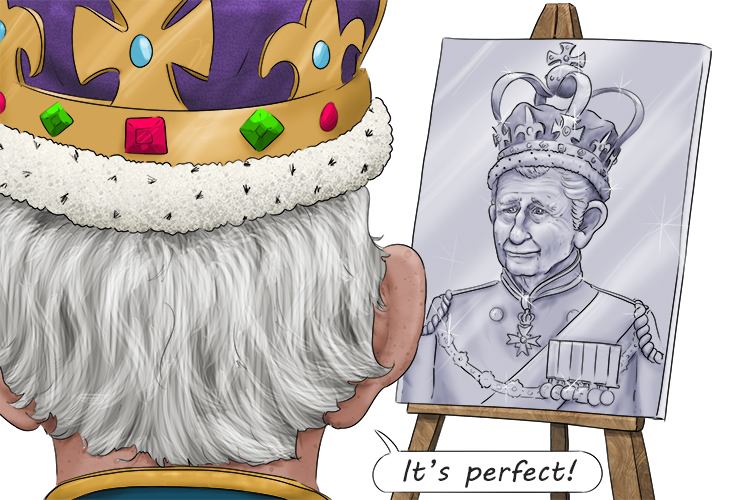
Monochromatic refers to the use of only one colour in a painting or other work of art. By using one colour, but in varying values and intensities, you can still create works of art in detail. The term is also commonly used in reference to more modern and abstracted art works too, when one colour is predominant.
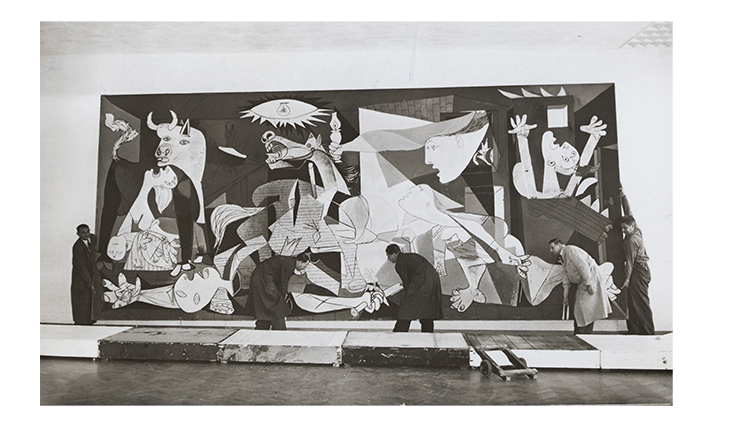
Guernica, 1937, Pablo Picasso.
Although the photo above was taken in black and white, the painting itself was also monochromatic. The oil on canvas painting is huge, as you can see from the photo it dwarfs the men surrounding it. Even though Guernica doesn't feature any red blood and gore, the horrors of war are made crystal clear by the chaotic composition and the pained and terrified expressions on all of the surreal faces.
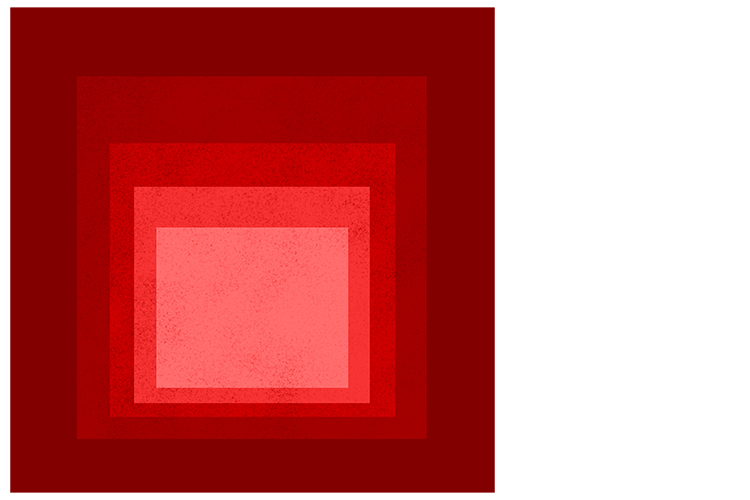
The picture above is an image in the style of Josef Albers that combines blocks of different shades of one hue. These were usually completed in oil using palette knife, painted on Masonite. More than 2000 of these paintings were made. The squares look like they are either going away from the viewer or coming towards them.
Monochromatic Project
For this project we will use acrylic to paint a painting of just one colour, with the addition of either white paint or black paint to change the tone.
To begin, find a photo you want to copy and print it in black and white. this will allow you to see it as tones rather than colours.
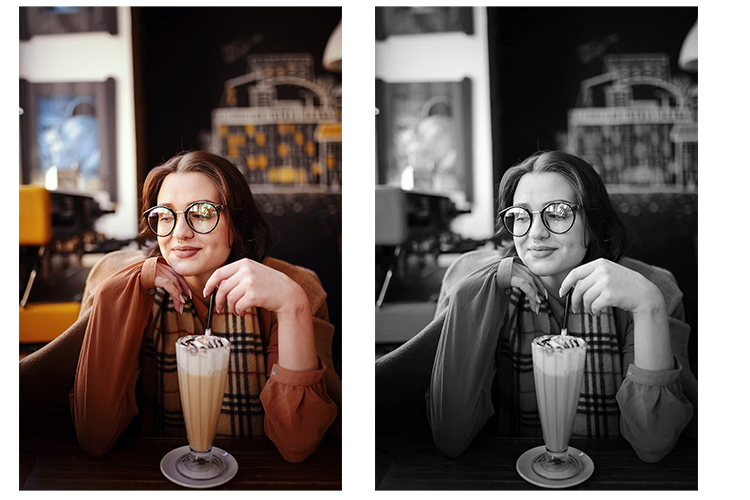
Using the Mammoth grid technique, sketch your image onto paper or canvas, whichever you prefer. As you will be painting a tonal painting, rather then just outlines, you may wish to mark out some boundaries of different tones, as we have below with the areas of light and shade in the background.
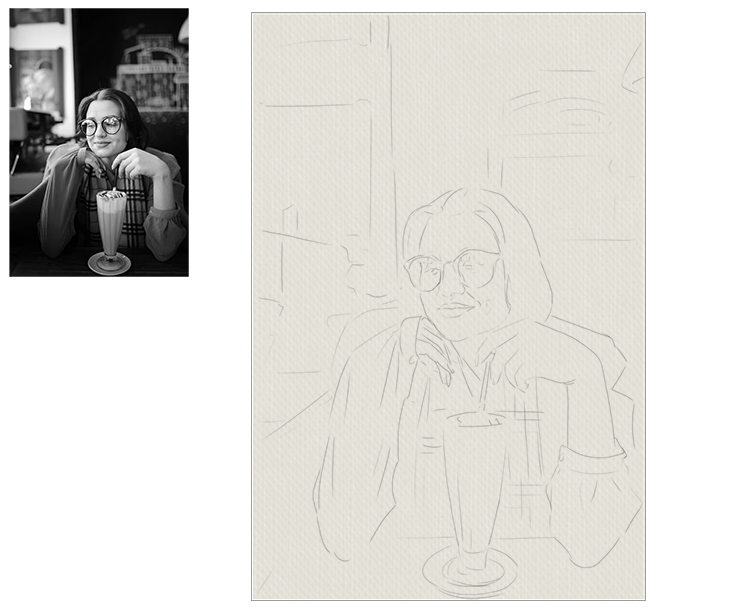
Begin by painting a wash of the colour you are using. Do so by mixing a little bit of the paint with water, washing the canvas in this tone will give you a better mid-tone whilst still allowing you to see your sketch lines. Monochromatic art can be done in any colour, keep in mind the choice of colour can effect the tone and emotion of the piece. For our example we have chosen red because the vibrant colour contrasts the normality of the scene.
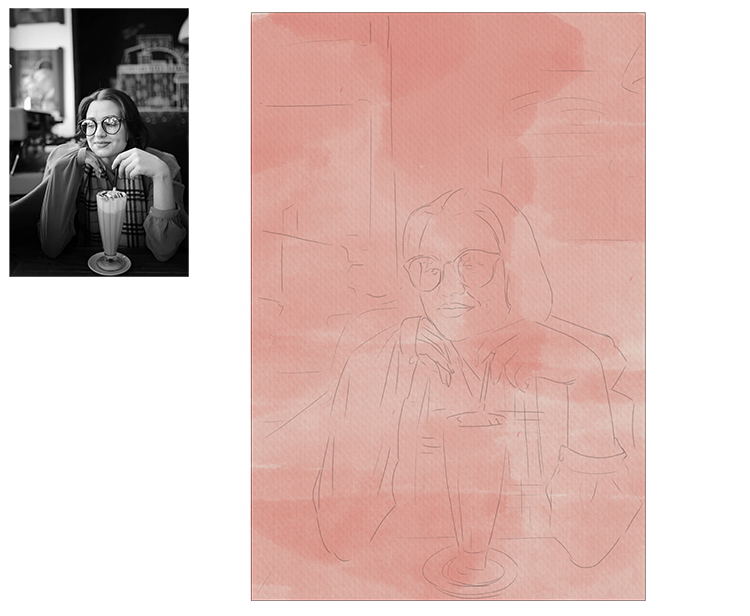
We will use the dark to light method painting this picture, starting by blocking in the darkest tones on the canvas. You can see on this chart, taken from Mammoth Memory Value, the addition of white and black to your paint will create a whole range of tones.
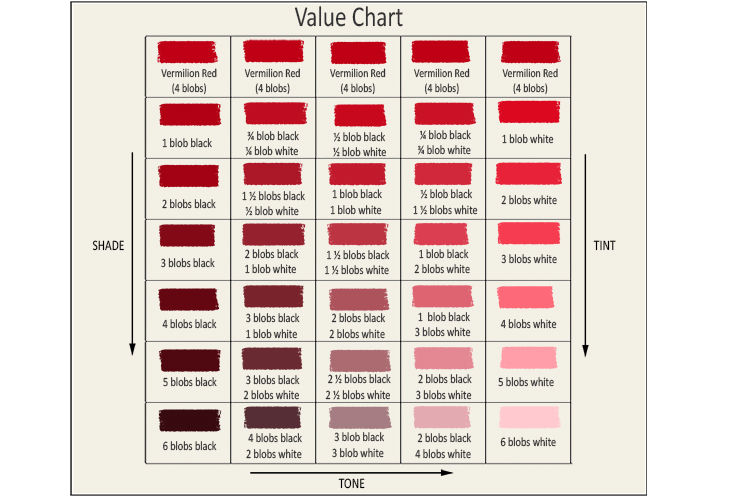
Mix a lot of black into your chosen colour to create a 'darkest tone', similar to the bottom left of the chart above, and paint in the black areas of your photo with this tone. For these stages, don't worry too much about the minor details, focus more on the blocks of tone.

Continue with the darker tones, getting lighter with each section, by adding less black to each tone you mix, until you reach the tube colour without any additional black. Because we are painting with quite thick paint, they won't dry as quickly, which will allow the tones to mix a little.
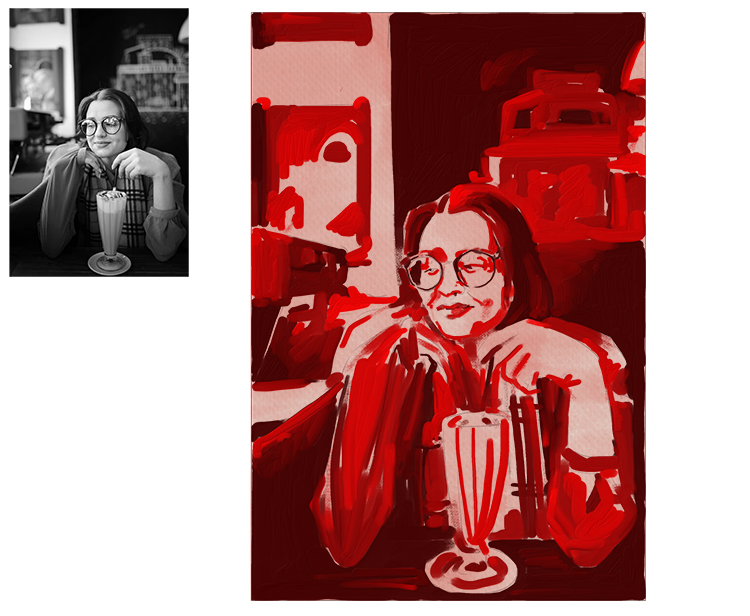
Now you have reached the tube colour, you can add a little bit of white to make the first lighter tone. The really whiter tones we will tackle later.
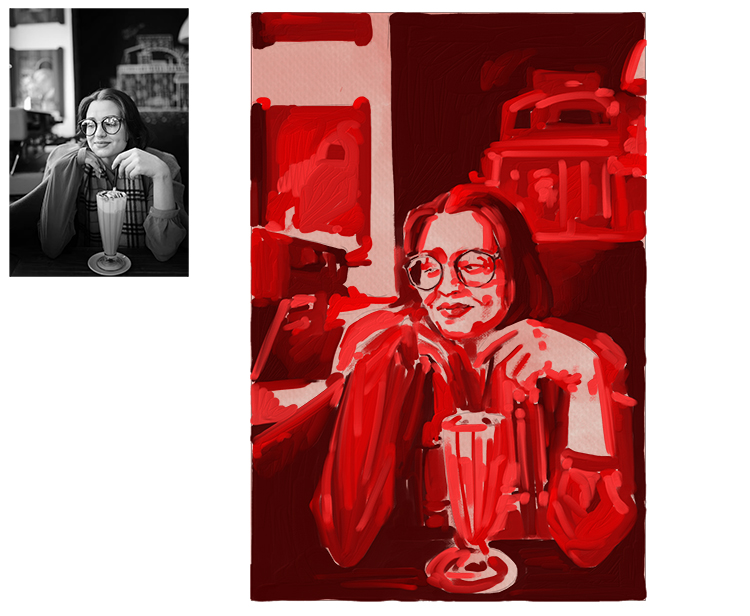
Continue adding more white to the paint in stages, and building up to the lighter tones on the painting.
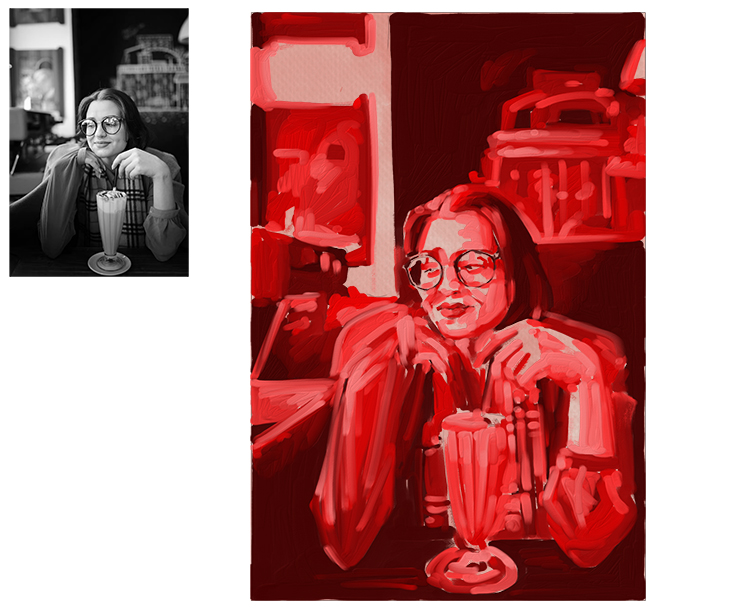
Keep adding lighter tones until you are almost at pure white.
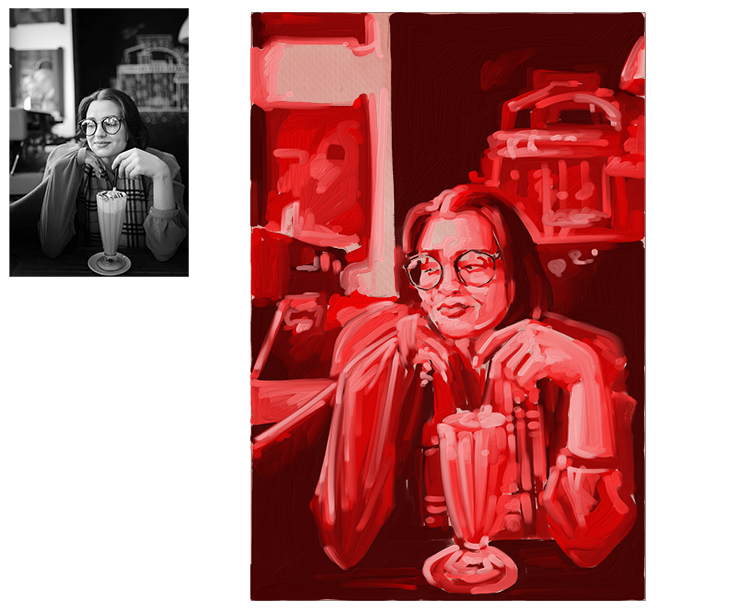
You can add almost pure white to add the lightest tones, save the completely pure white for the finishing touches.
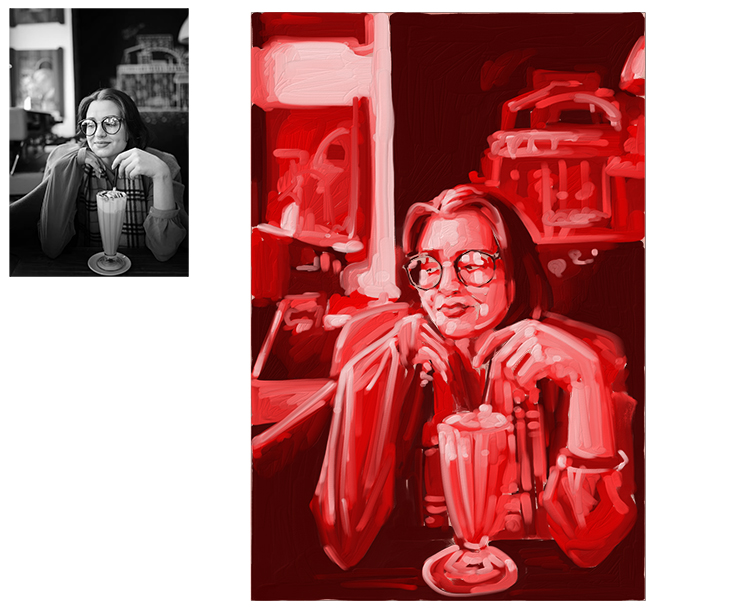
To complete your painting, you can add any pure black or pure white areas of dark and shade. Do this sparingly, just for extreme shade or black areas or sources of reflected light of white.
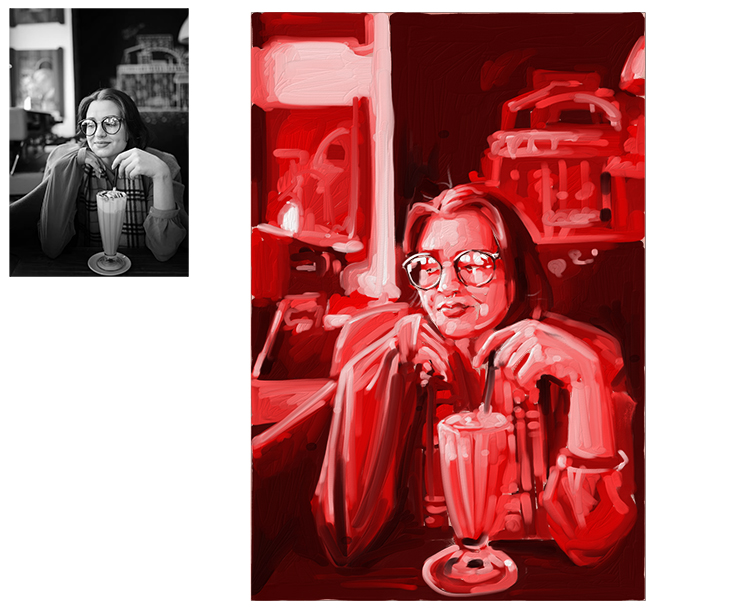
Your monochromatic painting is now complete.
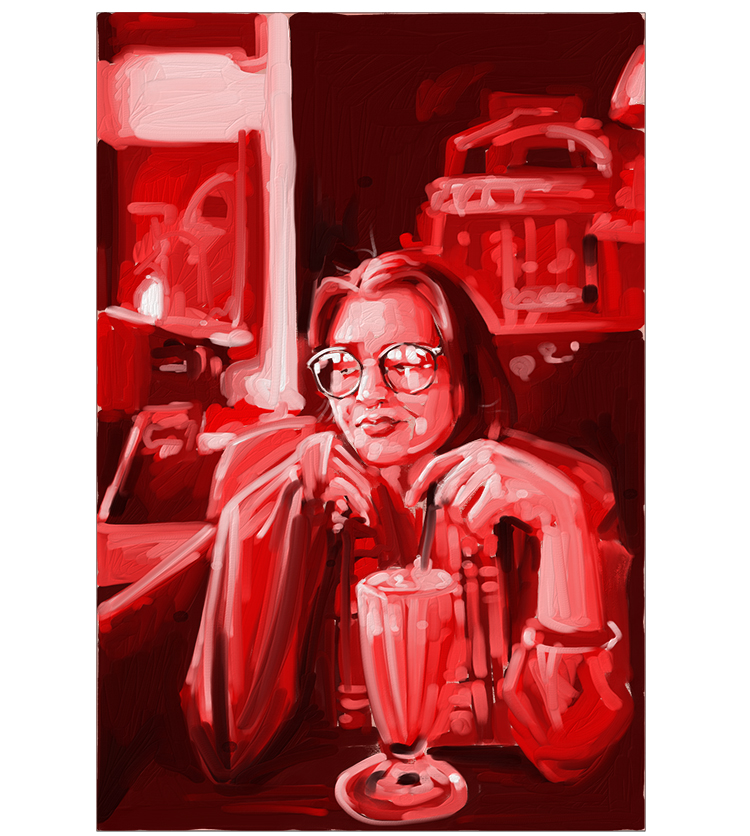
Monochromatic.




